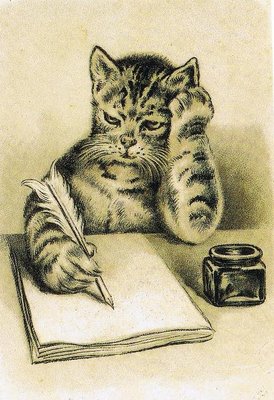From the very beginning of our
class discussions up until the last week of real classes, I have noticed a
common theme that has been tied to class in society. The topic of social classes, and its’ problems,
seem to be something each generation of literature is able to relate to in some
way, shape, or form. I also found it personally interesting to see all the
different interpretations of this topic that we read throughout the entirety of
the semester. For example, “Why shouldna
the poor folk mowe?”, “Songs of
Innocence and Experience”, “The
Importance of being Earnest”, “Alice’s
Adventures in Wonderland”, and “The
Strange Case of Dr. Jekyl and Mr. Hyde” all reveal parts of how British society
operated, along with the “rules and regulations” of the time period as far as
class in society goes.
“Why shouldna the poor folk mowe?” is an
obvious stab at the issue of social hierarchy. Like mentioned in class, Robert
Burns intended this to be a “drinking song”. This simple “drinking song” sure
made it out of the Pubs and into history. The poem was also often published
under the more “polite” title “When
Princes and Prelates” later on down the road. “Why shouldna the poor folk mowe?” strongly hints at the idea of reproduction
being the lower-classes most powerful weapon. Power, sexuality, and human reproduction are
being symbolized by the success of the French Revolution. The European monarchy
has often been criticized for their sexual and political indecency that seemed
to follow them around, which seems to portray them as impotent. Through this
tune, I felt like power comes as a result from common folks and their sexuality.
I think Burns was trying to advocate the victory of sex over social class; the
common man has been painted as content alongside his miserable monarchy companions,
and their unsuccessful battles with the French republic.
William
Blake, to me, was probably one of the more complex people we talked about. I honestly
enjoyed the complexity of his poetry in “Songs
of Innocence and Experience” though, and I felt like he really reflected the
values and morals of his society in this collection of poems. Through “Songs of Innocence”, political and
social corruption can be found surrounding a child who seems blissfully unaware
of what is really going on. I personally
felt like both “The Lamb” and “The Chimney Sweeper” shows the political
and social corruption of the Romantic era, and what morals were valued in
society at the time. For
example, the child in “The Lamb” is innocent,
but is also being indirectly subjected to “experience” with incorrect ideas of
the Christian religion (“For He calls Himself a lamb. He is meek, and He is
mild, He became a little child. I a child, and you a lamb. We are called by His
name”). In one of our class discussions, we talked about “The Lamb”. To me this shows
that the idea of being in the Christian faith was very important to society;
this little child was even trying to “teach” a lamb what he “learned” after all.“Songs of Experience” to me very clearly
trace the ideas of where corrupt lies in society, and the surrounding text is
not as vague, "flowery" or naive. “The Chimney
Sweeper” I felt also captured the current trends and norms of the Romantic society
at the time. In both versions of “The
Chimney Sweeper” the reader is able to see the abusive and twisted side of
child labor. Child labor was a growing concern at this time, but socially and politically
acceptable. Both versions show the
corrupt ugly side to society, and both show children that are subjected to “experience”
(or the withering of the human spirit) at a very young age.
“The Importance of being Earnest”
by Oscar Wilde was probably one of my favorite things we touched on for this semester.
All of the characters are so over the top too that it is hard to not see the satiric
elements of Victorian society being mocked at. The three main female characters,
Lady Bracknell, Gwendolyn, and Cecily, really stood out to me the most. As I
mentioned in one of my earlier blog posts (The Importance of Being Earnest),
earnestness in Victorian society dealt with the jumping between lower and upper
classes, including the spread of religion; the title of the play itself is a
pun. All of the characters seem to either attempt this or try to hinder it from
happening. Lady Bracknell’s character is also representation in the extreme
with the hypocrisy, traditions, structure, and standards held by the aristocratic
society. She is very materialistic, stubborn, and unbelievable with her demands
in regards to potential suitors for Gwendolyn. Gwendolyn Fairfax represents the
exact opposite. She is the arbiter of high fashion and society; the “it” girl. Sophistication and intelligence roll off her tongue,
and Gwendolyn has a rebellious strike to her that clashes with Lady Bracknell’s
“by-the-book” set of rules for her. Morals are also high on Gwendolyn’s
character as well which can be seen through her obsession with the “virtuous-sounding”
name of Earnest. On the other extreme of
Gwendolyn and Lady Bracknell, there is Cecily. Cecily is painted out to be this
sweet “country- bumpkin” type of girl, more innocent then Gwendolyn. Much like
Gwendolyn, however, Cecily also has a rebellious side to her; the idea of wickedness
holds her fascination. The idea of “wickedness” and rebellion is that draws her
to the name of Earnest; this can be seen in the medieval fantasies she images
between her and “always in trouble” Earnest.
“We’re all a little mad”, is right
on the dot! The mockery of class and society take a twisted ride with Lewis Carroll’s
Alice’s Adventures in Wonderland. Wonderland,
as I assume many of you lovely people are aware of, consists of mad people (not
just the angry kind), and backward ideas. Like “The Importance of Being Earnest”,
the characters are also over the top but in extremely different ways. I found
both Alice’s character and the Cheshire Cat especially interesting with how the
morals and values of Victorian society are mocked and represented in different
ways. Alice is a good representation of the “small adult” motif Victorian
children were identified as. She is very logical, curious, and tries her best
to morph and inject her experiences
Where
best to begin with The Strange Case of
Dr. Jekyl and Mr. Hyde.. This is one of those stories, like Alice’s Adventures in Wonderland, that a
child kind of seems to grow up knowing (at least I did). As a kid, all I knew
of the original story was that Dr. Jekyl was the good guy, and when he drank a
potion he somehow transformed into Mr. Hyde: the rude and ugly bad guy. I never
really thought of how both Dr. Jekyl and Mr. Hyde represented and reflected the
morals and values of their society until this
semester though. One of our
fellow classmates pointed out in their blog post (Cricket’s Hidden Hyde bog
post), that Mr. Hyde was the result of one needing to escape the Victorian
lifestyle of propriety and etiquette. I completely agree with this idea. Dr. Henry
Jekyl is an outward representation on how a person of the Victorian society
should be: neat, proper, well-mannered, and respectable. Mr. Edward Hyde,
however, is the complete opposite. He is rude, cruel, violate, and language in
general almost seems to disappear around him entirely; he is the death and
corruption that hid inside poor Dr. Jekyl, and opposition of what was socially acceptable
in society: high class versus low class. Both “people” also, in a way, become individually
addicted to life in society, and fight to stay in it whether good or bad results.
All of these works of literature show
that no matter what era of time you are in, one can always find history within
texts. Values and morals of society, along with class, can be found even
through satires, and complex poems like that of William Blake if you look hard
enough.
Works Cited
"Songs of
Innocence and of Experience." (1789, 1794 1789 (objects
2-29, 34-37 as Arranged in This Copy), 1794 (objects 1, 30-33, 38-55 as
Arranged in This Copy).): Electronic Edition. N.p., n.d. Web. 07 May 2013.
Damrosch, David,
Susan J. Wolfson, and Peter J. Manning. The Longman Anthology of
British Literature. Boston:
Longman, 2010. Print.
"Impossible,
Perverse & Strange." Impossible, Perverse &
Strange. N.p., n.d. Web.
08 May 2013.




 From the eighteenth to the twenty first
century, poetry and its many forms have provided insight into the cultural
contexts of the generation in which it was written. Within the literary scope,
poetry functions as a vehicle for the poet to provide commentary on revolution,
social issues, economics, and art itself. What makes poetry the ideal mode for
this sort of commentary is its ability to be subtle and brash, visual and
verbal, literal and metaphorical. In its various structures and rhythms, poetry
has become the optimum method for generating a pervading sense of artistic
statement to both the common man and the wealthy. William Cowper, Robert Burns,
William Blake and Thomas Hardy are all great examples of poets who have used
poetry to reflect on events that socially impact the cultures in which they lived.
From the eighteenth to the twenty first
century, poetry and its many forms have provided insight into the cultural
contexts of the generation in which it was written. Within the literary scope,
poetry functions as a vehicle for the poet to provide commentary on revolution,
social issues, economics, and art itself. What makes poetry the ideal mode for
this sort of commentary is its ability to be subtle and brash, visual and
verbal, literal and metaphorical. In its various structures and rhythms, poetry
has become the optimum method for generating a pervading sense of artistic
statement to both the common man and the wealthy. William Cowper, Robert Burns,
William Blake and Thomas Hardy are all great examples of poets who have used
poetry to reflect on events that socially impact the cultures in which they lived.

 The huddled
figure to the left is clothed darkly and wandering in the pouring rain. The
look on the boy’s face is one of melancholy or longing, as if he knows he will
soon be dead from his long days scrubbing the depths of blackened chimneys. The
boy walks alone in an empty street to an unknown destination, evoking his
isolation and lonely death. This version of “The Chimney Sweeper” is from Songs
of Experience. The poem itself rests above in the clouds, beyond the rain, as
if they are the boy’s thoughts. The color not just in this image, but all other
available prints seen
The huddled
figure to the left is clothed darkly and wandering in the pouring rain. The
look on the boy’s face is one of melancholy or longing, as if he knows he will
soon be dead from his long days scrubbing the depths of blackened chimneys. The
boy walks alone in an empty street to an unknown destination, evoking his
isolation and lonely death. This version of “The Chimney Sweeper” is from Songs
of Experience. The poem itself rests above in the clouds, beyond the rain, as
if they are the boy’s thoughts. The color not just in this image, but all other
available prints seen 









